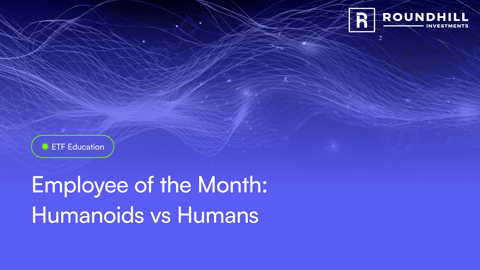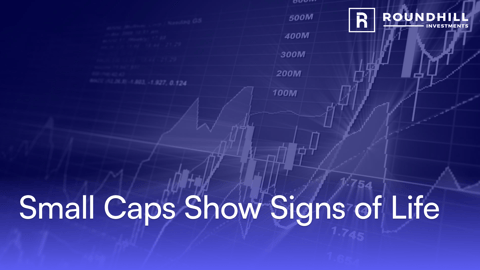From Sci-Fi to Your Portfolio: Introducing HUMN, the Humanoid Robotics ETF
Humanoids Are Clocking In—Today
- Tesla Optimus: Gen‑3 prototypes are sorting battery cells at Fremont, with a “legion” of bots targeted for 2025‑26.
- Xiaomi CyberOne: The bipedal “CyberOne” robot has demonstrated walking, conversation, and object‑handling capabilities; Xiaomi is investing heavily to prepare it for assembly‑line pilots.
- Hyundai / Boston Dynamics Atlas Next Gen: Under Hyundai’s majority ownership, Boston Dynamics is re‑engineering its famed Atlas platform into a commercial‑grade humanoid aimed at industrial tasks.
Source: Boston Dynamics
So, what exactly is a Humanoid Robot?
Humanoid robots are general‑purpose, bipedal (two-legged) machines built to match the height, reach, and dexterity of the human body. Unlike traditional single‑purpose industrial arms that must be caged off or mounted to factory floors, humanoids are designed to walk through human‑sized doorways, climb stairs, grasp everyday objects, and collaborate safely in the same physical spaces we occupy. Their core technology stack combines high‑fidelity sensors (stereo cameras, force‑torque sensors, lidar) with AI‑driven perception and sophisticated force‑controlled actuators that mimic the coordinated muscle movements of shoulders, elbows, wrists, hips, knees, and ankles.
The purpose isn’t to create a science‑fiction replica of ourselves, but to deliver “drop‑in” labor that can tackle the jobs that humans either do not want, cannot keep filled, or are simply too dangerous. Roboticists summarize these roles with the “three D’s of work”:
- Dirty tasks that involve grime, toxic chemicals, or biological waste (e.g., cleaning sludge tanks, handling scrap metals).
- Dull assignments that are endlessly repetitive and mind‑numbing (e.g., loading thousands of identical boxes during an overnight shift).
- Dangerous environments that expose workers to high heat, heavy lifts, or acute injury risk (e.g., moving 50‑lb totes in a 110 °F warehouse).
Because humanoids use the same tools, ladders, and safety gates designed for people, businesses can deploy them without retro‑engineering entire facilities, significantly lowering the adoption threshold compared with fixed automation.
A $5 Trillion Runway
Morgan Stanley Research estimates that humanoid robots and their supporting ecosystems including software, service contracts, spare parts, and silicon could surpass $5 trillion in annual revenue by 2050, with nearly one billion units in global operation. While those figures sit decades out, even conservative adoption curves imply a multi‑hundred‑billion‑dollar opportunity by the mid‑2030s. The forecast is built on three accelerating tailwinds: shrinking working‑age populations in most developed markets, rapid declines in AI compute costs, and the capital‑light advantage of bipedal form factors that fit existing infrastructure.

Why Now?
- Labor Squeeze: Warehouse and logistics operators face more than 450,000 vacant roles in the United States alone, pushing hourly wages higher and turnover rates above 40%. Robots‑as‑a‑service contracts priced around $30 per hour for Agility’s Digit are already competitive with human labor. As demographic headwinds intensify, the economic incentive to automate only grows.
- Rapid Capability Curve: Over the past year, Tesla reported a 20% increase in pick‑and‑place speed for Optimus, while Figure AI doubled its walking velocity. Those improvements mirror the smartphone era, where swift hardware iterations unlocked new use‑cases each product cycle.
- Cost Compression: The price of running large vision‑language models has fallen from roughly $7 per million tokens in 2023 to less than one dollar today making on‑bot intelligence economical for commercially deployed robots.

Why HUMN?
HUMN takes a sharp lens to human robotics, allocating to companies whose revenues and R&D budgets are specifically tied to building or enabling humanoid form factors. By narrowing the universe specifically to companies involved in human robotics and not including filler companies, investors gain purer exposure to the theme without diluting returns across unrelated segments that come with indexation.
Humanoid robotics is unfolding at a pace that outstrips the quarterly and semi‑annual rebalancing schedules of most thematic indices. Start‑ups reach public markets through direct listings, reverse mergers, or carve‑outs, while legacy stalwarts pivot into robot manufacturing through joint ventures and strategic spin‑offs. A static, rules‑based basket risks two pitfalls: missing the next breakout innovator and over‑allocating to mega‑caps whose humanoid ambitions remain peripheral to their core business.
Because HUMN is actively managed, the portfolio management team can respond to fast‑moving breakthroughs, such as buying into newly public innovators at the moment they achieve commercial traction, trimming legacy names when momentum fades, and reweighting positions as competitive dynamics evolve. The result is a living portfolio that mirrors the frontier nature of its target market.
Portfolio weights reflect real‑time conviction including scaling exposure when a supplier secures a landmark production contract, or trimming back if valuation runs too far ahead of deliverables. In an industry where last quarter’s prototype can become next quarter’s industry standard, dynamic stewardship is a necessity, just like it has been with Generative AI.
Finally, HUMN offers truly global reach in a single trade. From U.S. AI silicon and Swedish precision‑measurement firms to Korean actuator specialists and Chinese robot OEMs, investors tap an ecosystem that would be cumbersome and costly to build stock‑by‑stock.
Top 10 Holdings
Covered call strategies allow investors to generate income from equity exposure without relying on bond yields. These strategies benefit from elevated implied volatility, sideways or rangebound equity markets, and increased demand for frequent, consistent income distributions.

Table data as of 6/26/2025.
To learn more about the constituents of HUMN, please read our blog From Optimus to Atlas: Meet the Robots Behind HUMN: https://blog.roundhillinvestments.com/from-optimus-to-atlas-meet-the-robots-behind-humn*
*Some of the companies listed in this blog may be held in the fund. Fund holdings are subject to change.
Disclosures
Investors should consider the investment objectives, risk, charges and expenses carefully before investing. For a prospectus or summary prospectus with this and other information about Roundhill ETFs please call 1-855-561-5728 or visit the website at www.roundhillinvestments.com/etf/HUMN. Read the prospectus or summary prospectus carefully before investing.
All investing involves risk, including the risk of loss of principal. There is no guarantee the investment strategy will be successful. The fund faces numerous risks, including options risk, liquidity risk, market risk, cost of futures investment risk, clearing broker risk, commodity regulatory risk, futures contract risk, active management risk, active market risk, clearing broker risk, credit risk, derivatives risk, legislation and litigation risk, operational risk, trading issues risk, valuation risk and non-diversification risk. For a detailed list of fund risks see the prospectus.
Humanoid Robotics Companies Risk. The Fund invests in Humanoid Robotics Companies, which may have limited product lines, markets, financial resources, or personnel and are subject to the risks of changes in business cycles, world economic growth, technological progress, and government regulation. These companies are also heavily dependent on intellectual property rights, and challenges to or misappropriation of such rights could have a material adverse effect on such companies. Securities of Humanoid Robotics Companies tend to be more volatile than securities of companies that rely less heavily on technology. Humanoid Robotics Companies typically engage in significant amounts of spending on research and development, and rapid changes to the field could have a material adverse effect on a company's operating results. Additionally, the development and commercialization of fully-functional humanoid robots involve complex and evolving technologies, which may face unforeseen technical challenges, regulatory hurdles, and market acceptance issues. As a result, investments in Humanoid Robotics Companies may be subject to higher levels of risk and volatility.
Consumer Discretionary Sector Risk. Consumer discretionary companies, such as retailers, media companies and consumer services companies, provide non-essential goods and services. These companies manufacture products and provide discretionary services directly to the consumer, and the success of these companies is tied closely to the performance of the overall domestic and international economy, interest rates, competition and consumer confidence. Success depends heavily on disposable household income and consumer spending. Changes in demographics and consumer tastes can also affect the demand for, and success of, consumer discretionary products in the marketplace.
Emerging Markets Risk. The Fund’s investments in China may be subject to a greater risk of loss than investments in more developed markets. Emerging markets may be more likely to experience inflation, political turmoil and rapid changes in economic conditions than more developed markets. Emerging markets often have less uniformity in accounting and reporting requirements, unreliable securities valuation and greater risk associated with custody of securities.
Information Technology Companies Risk. Information technology companies face intense competition, both domestically and internationally, which may have an adverse effect on profit margins. Like other technology companies, information technology companies may have limited product lines, markets, financial resources or personnel. The products of information technology companies may face obsolescence due to rapid technological developments, frequent new product introduction, unpredictable changes in growth rates and competition for the services of qualified personnel. Companies in the information technology sector are heavily dependent on patent and intellectual property rights. The loss or impairment of these rights may adversely affect the profitability of these companies. Information technology companies are facing increased government and regulatory scrutiny and may be subject to adverse government or regulatory action.
Concentration Risk. The Fund is concentrated in the industry or group of industries comprising the health care sector. The Fund may be susceptible to an increased risk of loss, including losses due to adverse events that affect the Fund’s investments more than the market as a whole, to the extent that the Fund’s investments are concentrated in the securities and/or other assets of a particular issuer or issuers, country, group of countries, region, market, industry, group of industries, sector, market segment or asset class.
New Fund Risk. The Fund is a recently organized investment company with a limited operating history. As a result, prospective investors have a limited track record or history on which to base their investment decision.
Roundhill Financial Inc. serves as the investment advisor. The Funds are distributed by Foreside Fund Services, LLC which is not affiliated with Roundhill Financial Inc., U.S. Bank, or any of their affiliates.

.png?width=80&height=80&name=RH_Symbol-PrimaryBllue%20(2).png)


